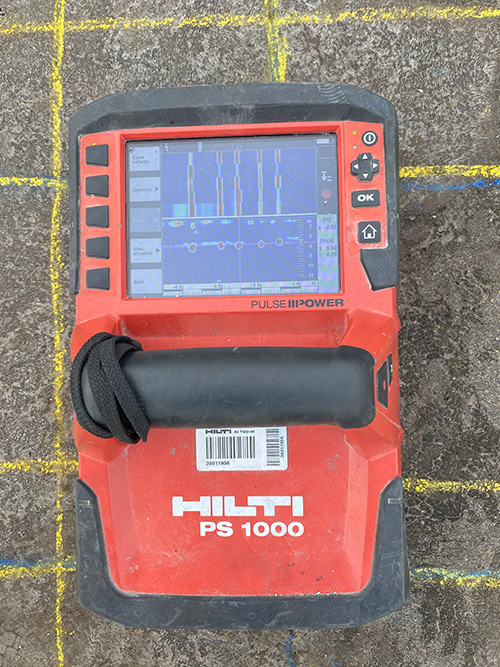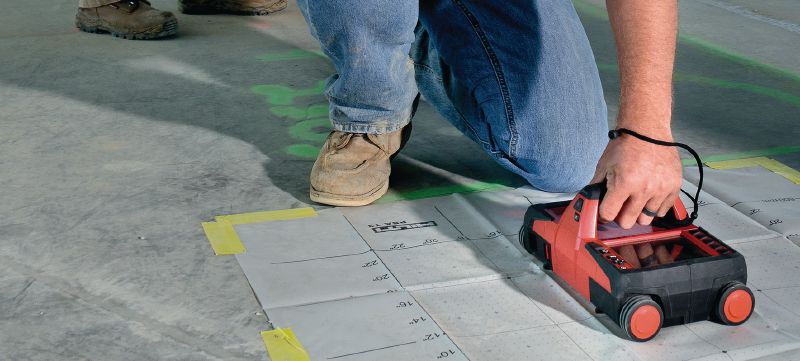Advanced Concrete Scanning Techniques: Guaranteeing Architectural Honesty
Advanced Concrete Scanning Techniques: Guaranteeing Architectural Honesty
Blog Article
Elevate Your Construction Refine With the Strategic Insights of Concrete Scanning for Boosted Efficiency
In the realm of modern building methods, the mission for efficiency and precision is vital. Welcoming ingenious modern technologies has come to be a keystone for attaining these objectives. One such innovation that has actually revolutionized the construction industry is concrete scanning. By using the calculated insights supplied by concrete scanning, building specialists can unlock a realm of enhanced productivity and structured processes. The effects of integrating concrete scanning go far past surface-level advantages, supplying a profound effect on project end results.

Advantages of Concrete Scanning
Enhancing project effectiveness and safety, concrete scanning supplies a non-destructive technique for discovering concealed things within concrete structures. By using modern technologies such as ground-penetrating radar (GPR) and concrete x-ray imaging, construction teams can accurately find rebar, post-tension cords, electrical channels, and various other blockages prior to drilling, cutting, or coring right into concrete.
The advantages of concrete scanning are many. Construction websites can be complex environments, and understanding what lies underneath the surface area can stop injuries and crashes.
Furthermore, concrete scanning promotes general task performance by avoiding and streamlining process rework. By determining prospective concerns early, groups can adjust their strategies proactively, saving time and sources in the future. Essentially, the fostering of concrete scanning innovations is a critical investment that pays dividends in regards to cost-effectiveness, security, and performance.
Modern Technology Combination for Effectiveness
Concrete scanning's capacity to simplify process and enhance task performance can be additional optimized through critical combination of advanced technologies. By including Structure Info Modeling (BIM) software into concrete scanning processes, building groups can accomplish a higher level of precision and coordination. Furthermore, the assimilation of Increased Reality (AR) innovation with concrete scanning can boost on-site visualization, enabling job supervisors and employees to overlay electronic details onto the physical atmosphere in genuine time.
Preventing Costly Errors
How can thorough focus to information throughout concrete scanning processes help construction teams in protecting against pricey mistakes? Concrete scanning plays a vital role in identifying prospective concerns prior to they rise right into pricey blunders. By making use of sophisticated scanning modern technologies such as Ground Permeating Radar (GPR) and electro-magnetic induction, building and construction teams can accurately find rebar, energies, voids, and other blockages within concrete structures. This degree of accuracy enables task managers to make educated decisions pertaining to the layout and style of their building and construction strategies, lowering the threat of unintended damage to essential framework throughout the building process. In addition, concrete scanning assists in making sure structural integrity by recognizing weaknesses or flaws in the concrete beforehand, permitting for timely repair services reference and alterations. By proactively resolving these concerns, building teams can avoid pricey errors such as rework, hold-ups, or safety and security threats that might develop from overlooked discrepancies in the concrete structure. Inevitably, purchasing detailed concrete scanning procedures proves to be a cost-effective strategy over time, saving both time and resources while enhancing overall task effectiveness and top quality.
Enhancing Project Administration
Precise attention to information during concrete scanning processes not only aids in staying clear of costly mistakes yet also lays a solid foundation for efficient project monitoring in building endeavors. By integrating concrete scanning innovation right into job management approaches, building teams can simplify process, improve communication, and ensure that tasks stay on track.
Concrete scanning supplies beneficial understandings into the structural honesty of existing components, allowing job managers to make educated choices regarding design adjustments or building sequences. This aggressive method decreases the threat of unforeseen delays or remodel, inevitably saving time and sources. Additionally, the data acquired from concrete scanning can be incorporated right into Building Information Modeling (BIM) systems, making it possible for real-time partnership and sychronisation among different stakeholders.
In addition, concrete scanning aids job supervisors identify potential dangers or barriers prior to they intensify right into bigger issues, promoting a much safer workplace for all involved. With enhanced exposure and precision given by concrete scanning modern technology, task supervisors can successfully prepare, monitor, and carry out building projects with better efficiency and self-confidence.
Optimizing Performance
One key aspect of maximizing efficiency is through the adoption of concrete scanning modern technology. By using ground-penetrating radar (GPR) and other scanning methods, building groups can precisely situate rebar, channels, and various other subsurface aspects, decreasing the risk of pricey errors and hold-ups throughout excavation and drilling.
Moreover, embracing Building Info Modeling (BIM) software can dramatically enhance productivity by producing in-depth 3D models that improve project visualization and sychronisation amongst different trades. BIM allows for better clash discovery, making it possible for concerns more info here to be recognized and settled before building also begins, conserving time and resources over time.
Executing a lean building and construction approach, which concentrates on getting rid of waste and maximizing performance across all job stages, is one more efficient strategy for maximizing original site performance. By fostering collaboration, communication, and continuous enhancement, construction groups can work much more cohesively in the direction of achieving project goals in a effective and structured way.
Verdict
In conclusion, the calculated execution of concrete scanning in the construction process offers numerous benefits, consisting of raised efficiency, cost financial savings, improved job monitoring, and boosted performance. By integrating this innovation, building and construction teams can avoid costly errors, improve their operations, and maximize their total task result. Concrete scanning is a valuable tool that can raise the construction procedure and bring about even more profitable and successful end results.

Report this page